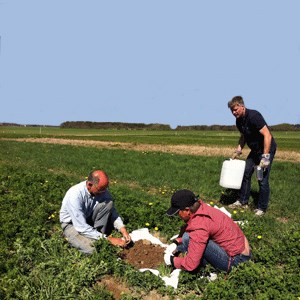Contact
Fatima El Khosht, PhD student, Department of Crop Production Ecology, Agricultural Cropping Systems

Long-term crop rotation and cropping system experiments can be used to evaluate the efficiency of different cropping systems and can act as a field laboratory for researchers within various disciplines. Data from the experiments can also be used to improve the ability of crop models to simulate production and yield levels as a function of changes in climate and cropping practices.
The experiment, placed at Borgeby Gård in Skåne in 1961, consists of three 8-year crop rotations and has the statistical structure "split-plot" with two repetitions. Every year in the crop rotation is represented. The experiment compares crop rotations with grassland (two and one years, respectively) and without grassland. It also compares what happens if the plant residues are ploughed, burned, removed or remain in the field.
The experiment, a block experiment with four repetitions, was established in 2010 at Säby in Uppland and consists of twelve 6-year crop rotations. The crop rotations are winter wheat and maize in monocultures, winter wheat/maize with break crop, a sustainable crop rotation and one rotation with a permanent grass-legume ley.
Not all years in the crop rotation are represented, but except in the monoculture trail, winter wheat/maize is represented every year in one of the rotation were they are grown with break crops.
In crop rotations with monocultures of winter wheat/maize and in winter wheat/maize with break crop, turning and non-turning soil tillage is applied.
The experiment has seven 6-year crop rotations and was established at Säby in Uppland in 1967. The statistical layout is split-split-plot with two repetitions and each year in the crop rotation is represented. Six of the seven crop rotations are monocultures of the spring crops wheat, oats and barley. Until 2011, the experiment had four nitrogen levels and in the monocultures the straw was ploughed in or burned.
Between the years 1965-1969, this experiment was established at Lanna in Västergötland, at Stenstugu on Gotland and at Säby in Uppland. The experiment consist of three 6-year crop rotations and have the statistical layout split-split-plot on Lanna and Säby and split-strip plot on Stenstugu. Each year in the crop rotation is represented but no replicates for crops in crop rotation. The experiment has four nitrogen levels.
Fatima El Khosht, PhD student, Department of Crop Production Ecology, Agricultural Cropping Systems